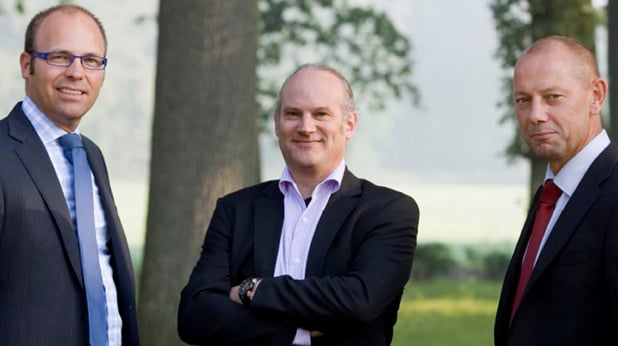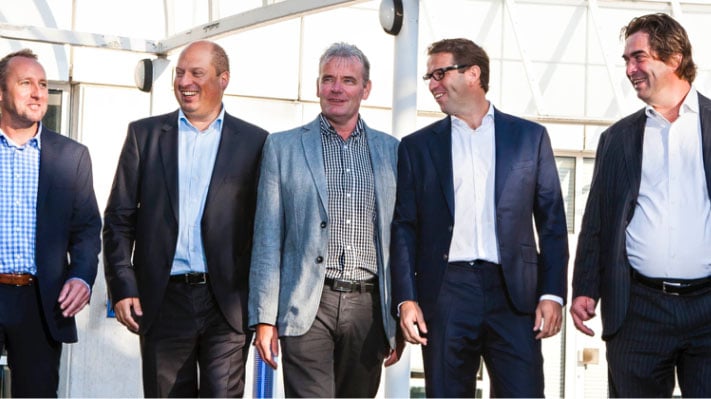Combined consultancy, hosting and support at Aalberts Industries

“Towards the end of 2006 we faced the limitations of our consolidation system, particularly concerning analysis and reporting,” says John Eijgendaal, CFO of Aalberts Industries. Aalberts Industries, founded in 1975 and listed on the stock exchange since March 1987, is an international specialist in industrial products, systems and processes, employing cutting-edge technological expertise.
The choice fell on SAP BPC, in those days still under the name Outlooksoft. The ability to process acquisitions and maintain the application centrally was an important consideration. “We make several acquisitions each year; in the past 20 years we have acquired 80 companies,” says John Eijgendaal. “We now have 150 locations worldwide, 23 years ago, only 5. In the previous system we could enter the acquisition with limited functionality. For example, making a cash flow statement using Excel had to be done in part manually.”
Periodic consolidation
“In the second phase of the implementation, we incorporated an automatic calculation of the current value of the acquisition’s opening balance; the ‘periodic consolidation’,” explains Alwin Berkhout, consultant for Finext and closely involved in the project from the start. “Besides the automatic processing of the correct opening balance values, correcting the movements and preserving the acquisition’s history, this also means converting local currency using so-called ‘fixed rates’.”
Periodic consolidation enables Aalberts Industries to generate automated cash flow statements. “The way we have set up the contribution to consolidation groups, enables us to organize them from month to month and allows the periodic consolidation to work,” says Ad de Greef, Group Controller, Aalberts Industries. “Furthermore, the entries are processed 100% automatically, also in the cash flow statements.”
“Allowances are made for exchange rate differences, resulting in the actual cash flow, which is a huge improvement to the system. Previously, exchange rate differences were part of all cash flow mutations, but now allowances are made for exchange rate differences in the individual cash flow mutations and presented as a single balance sheet item,” adds John Eijgendaal. “This also improves our audit trail. We are now able to present the exchange rate differences over the past years, in equity as well as in cash flow statements. This is very important considering our exposure in the US and the UK markets.”
Acquisitions and currency updates
Automated processing of acquisitions and currency updates is a huge improvement to the system. “During acquisitions, we needed to manually send out separate applications, including data for all 30 reporting units,” says Ad de Greef. “We did this several times each year.” “We also used to do this manually for currency updates,” adds John Eijgendaal. “Now everyone is using the same current exchange rates.”
"Periodic consolidation yields a shorter process time, more rapid analyses and swifter actions."
“On top of this we can perform ‘what if’-analyses in which the currency conversions have been applied. This focuses attention on the autonomous growth without showing exchange rate differences,” John Eijgendaal explains. “It is a technical achievement, but as a user you do not see the complexity, just the cash flow automatically rolling out.”
“Periodic consolidation yields a shorter process time, more rapid analyses and swifter actions,” says John Eijgendaal. “Furthermore, the quality of the data has improved immensely.” “Using several validations ensures good quality data as soon as the figures are sent in by the group companies,” adds Alwin Berkhout.
There is yet another advantage for the group companies. “There are group companies that need to consolidate several entities locally, often in several currencies as well. Now they can realize this within the same time envelope as the single entities, “ says John Eijgendaal.
User friendly
The end users are also enthusiastic about the possibilities of the reporting and consolidation system. “At the start we trained 60 -70 colleagues in-house. They were immediately enthusiastic because the system is user friendly, with a familiar Excel functionality,” says Ad de Greef. “It takes a short amount of time for new users to familiarize themselves with the system; after a brief introduction, they can get started immediately.”
“We use a combination of manual input schedules and automatic uploads. It is almost impossible to go wrong, because all users know what to fill in,” says John Eijgendaal. “The feedback we get from users is, that even though it is a group tool, it is really useful. In addition, it is a time-saver.”
Combined consultancy, hosting and support
Aalberts Industries has outsourced the entire chain of consultancy, hosting and support for SAP BPC, to the combined forces of Finext and Swap Support. “The main advantage is that we can now keep everything in one place, with one single focal point,” says Ad de Greef. “In the past, we had to contact different suppliers if a problem occurred, for example internal support, the hosting party at that time, SAP and Finext.”
“The fact that we now have a one-stop shop, gives us shorter process times when problems arise,” adds John Eijgendaal. “The people at Swap Support have knowledge of both our company and the functionality of the application. They understand our questions, whether technical, functional or hosting related. Because of that, they understand the importance of specific questions, and know when maximum pressure is demanded to reach a swift solution.”
"The fact that we now have a one-stop shop, gives us shorter process times when problems arise."
“The user-friendliness, stability and power of the consolidation system all help to keep everyone motivated to use the system,” says Ad de Greef. He names another advantage of outsourcing the chain of consultancy, hosting and support relating to performance management. “When we switched to Swap Support, we migrated to a new version of SAP BPC at the same time. Keeping the activities combined ensured a flawless migration.”
Organize first, computerize later
“Proper preparation is key. Organizing comes before computerizing,” says John Eijgendaal when asked to give advice to other organizations that wish to optimize their consolidation. “When you are in the middle of four acquisitions, you should not try to select a package that fits both the consolidation process and the acquisitions. We addressed this in phases. In phase one, we only included the basic elements, processing the acquisitions was not added until phase two.”
“This ensured a smooth transition,” comments Ad de Greef. “Both for ourselves and the users in the field as well as for the subsidiaries we have acquired since,” concludes John Eijgendaal. “We are now reaping the benefits.”
Share this
You may also like
These related stories

Finance and IT join forces at Wavin using SAP BPC

Reliability and accuracy at Parnassia using SAP BPC

